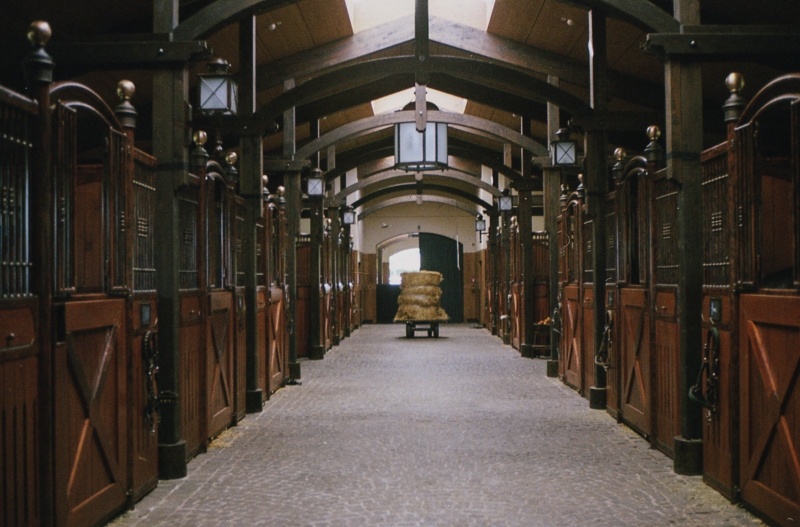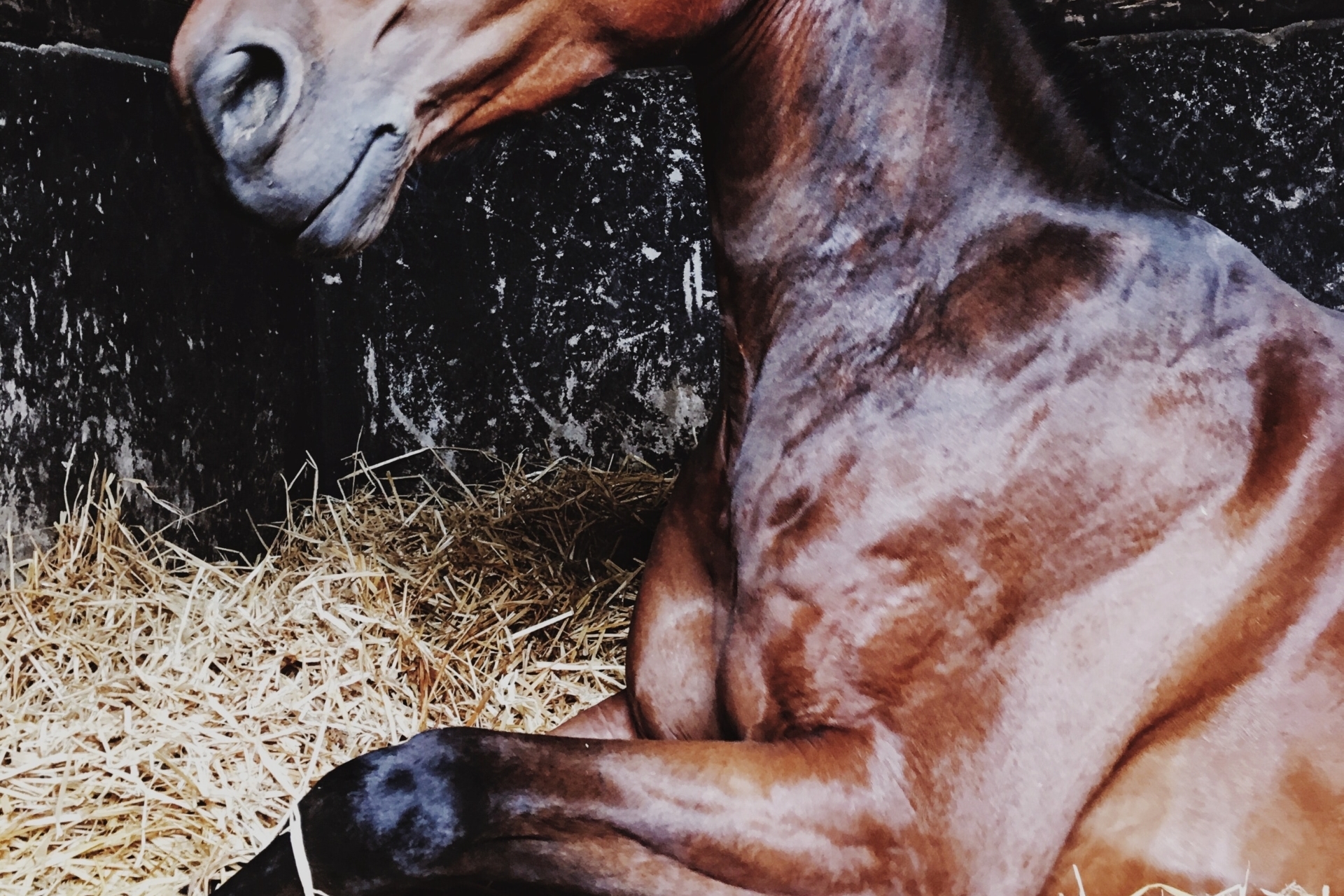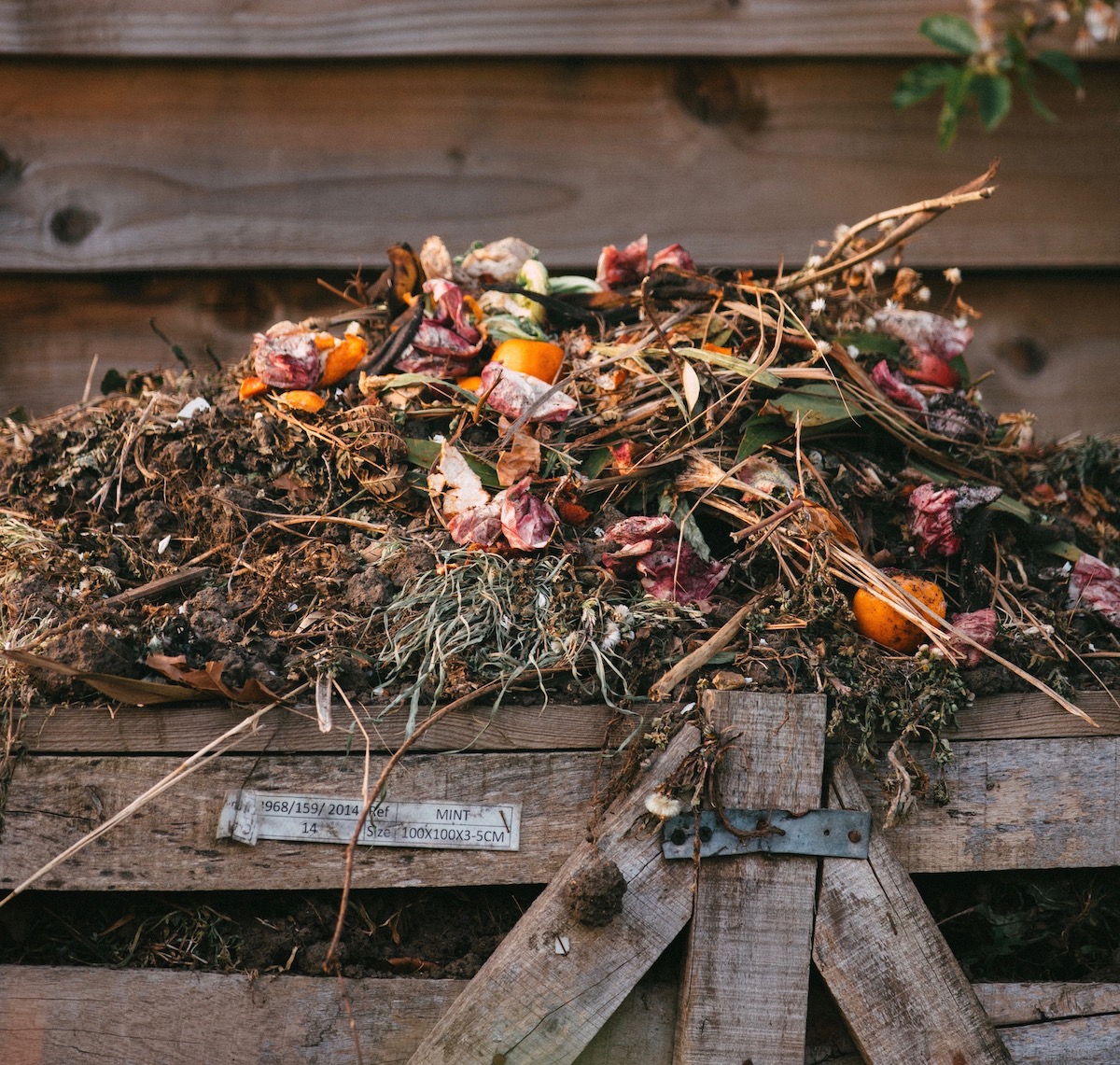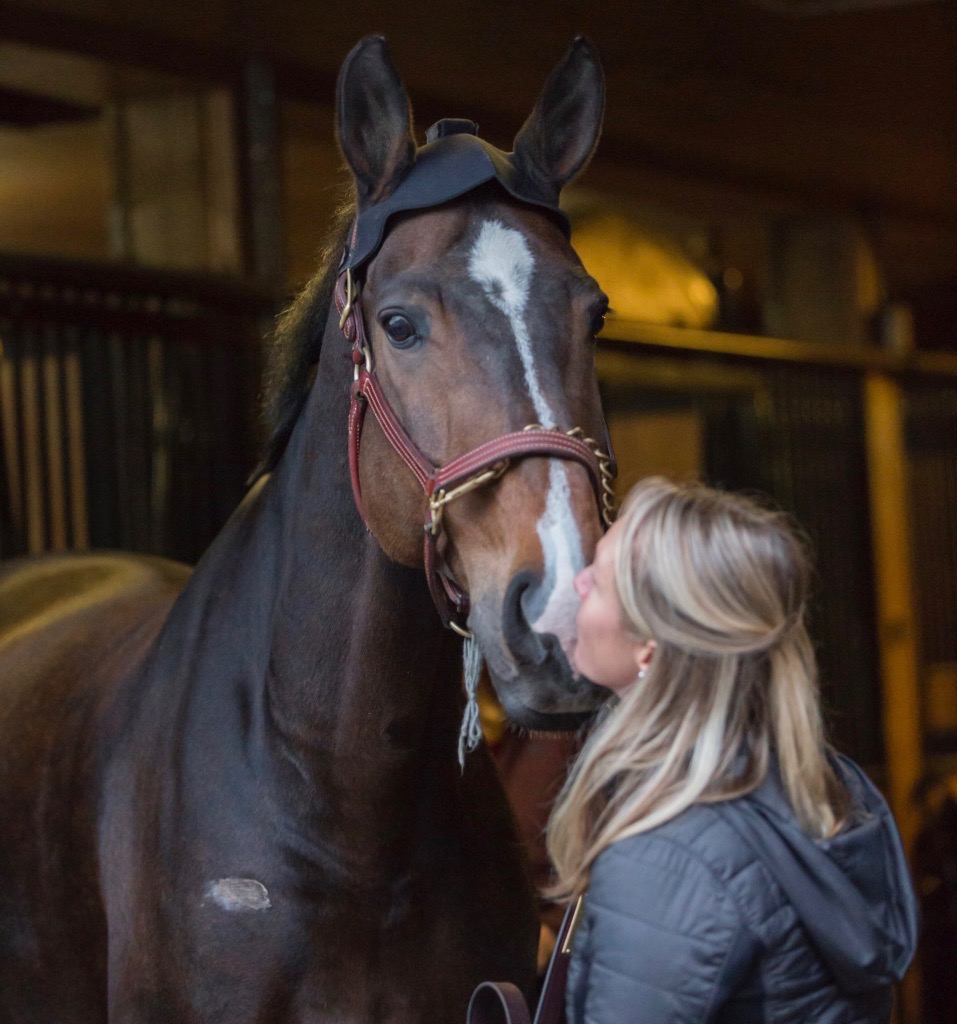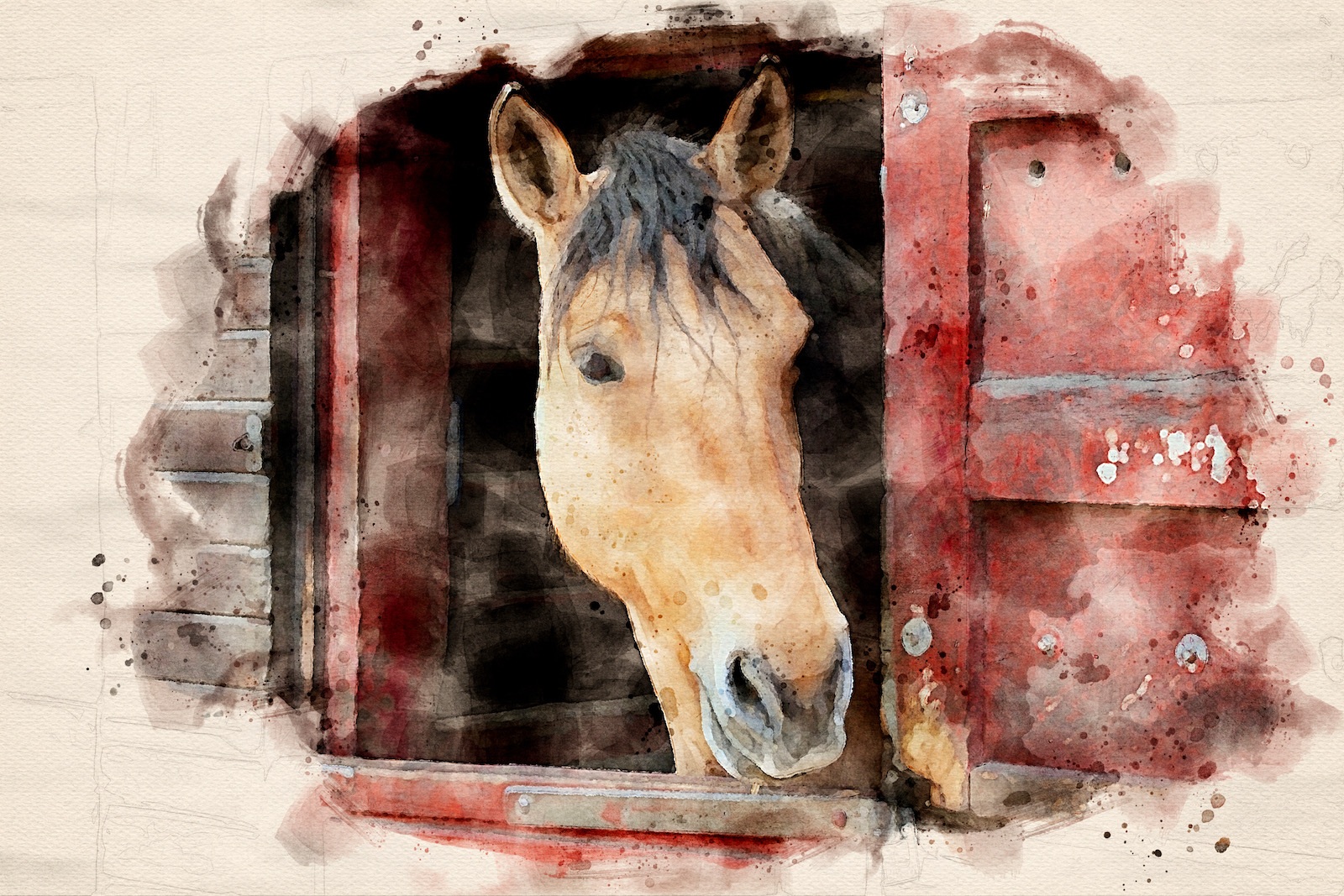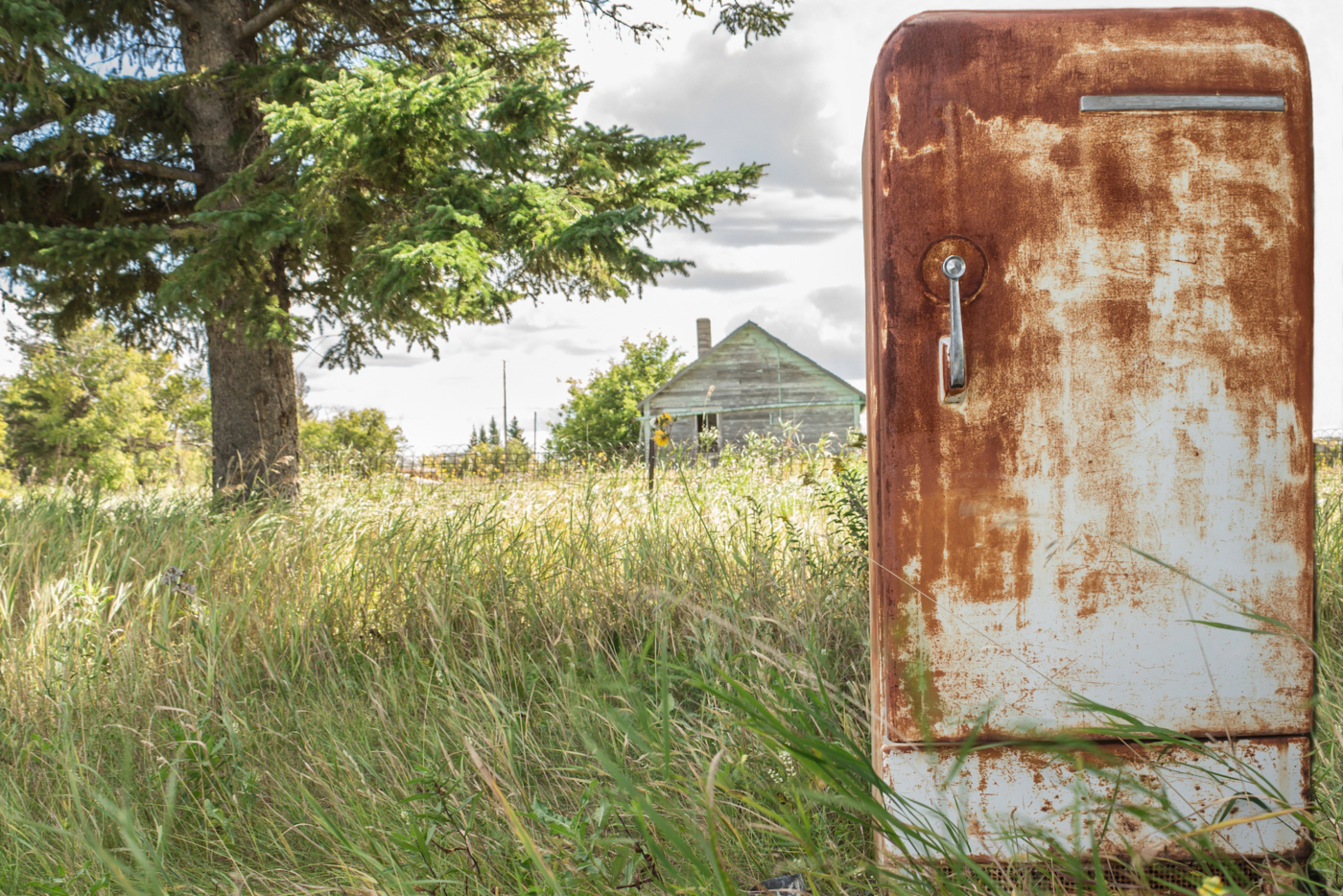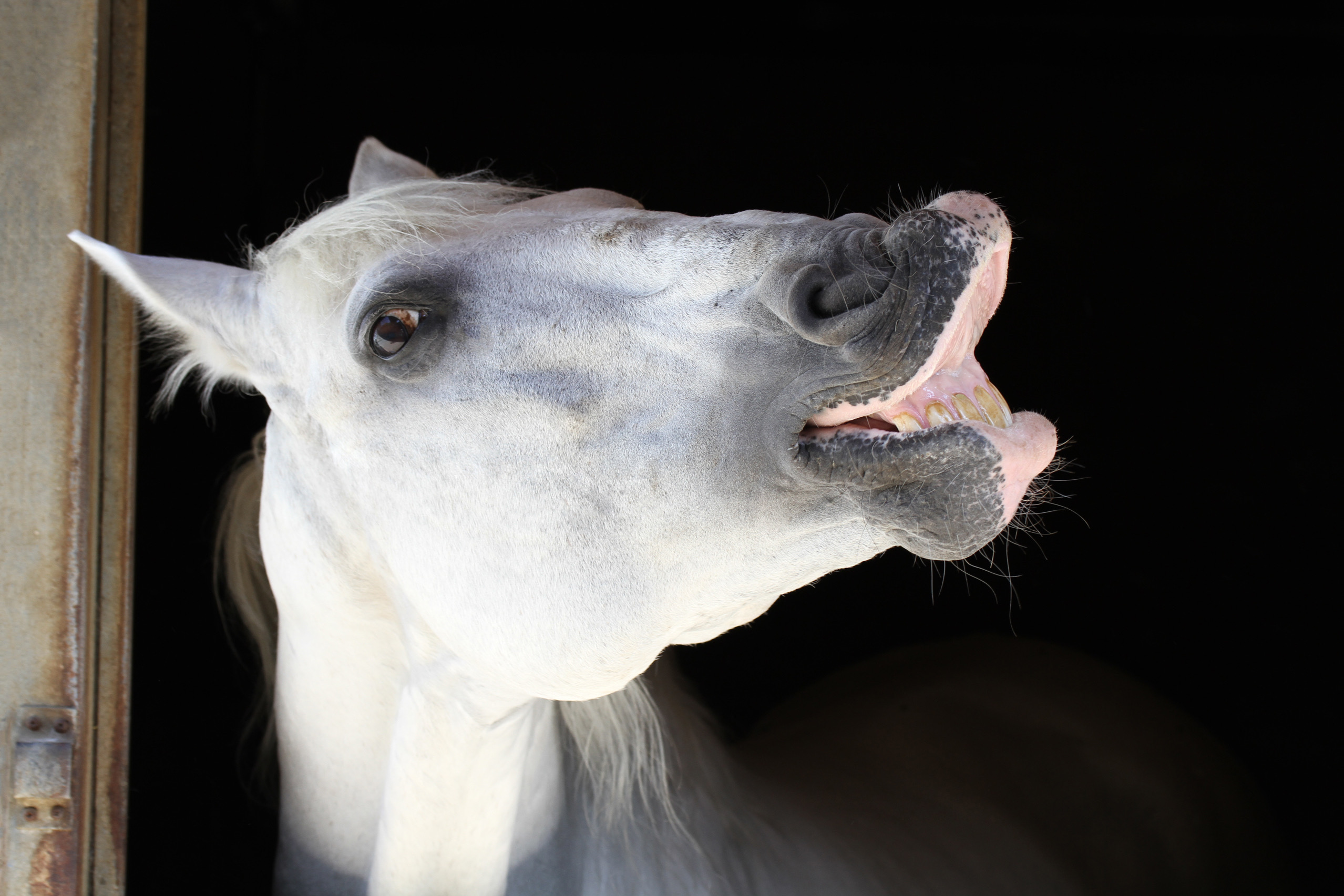When it comes to bedding, anyone who has ever wielded a manure fork can provide an in-depth, semi-scientific analysis of the pros and cons of each type. There are infinite considerations when it comes to tucking the ponies into their beds: straw, wood pellets, or shavings; flake size; dust level; depth; absorption; paper or plastic; and to bank, or not to bank. And now, to throw another option into the mix, hemp bedding is growing in popularity.
We’ve been on the hemp bandwagon for a while, due to the plant’s multiple eco-friendly elements: it grows quickly, thrives in harsh conditions, requires little water to grow, its deep roots replenish soil, and it is an extraordinary carbon sink (absorbing more carbon than a forest, acre for acre). Though we’ve yet to get our hands on any hemp bedding for the OR stables, we’ve done a lot of research and have discovered that it is highly absorbent, great for animals or owners with allergies due to minimal dust, helps prevent flies and parasites, and can be repurposed post-use as a fantastic compost. We also reached out to Angela Brackett at EnviroEquine & Pet, one of the leading manufacturers of hemp bedding and other natural products, and asked a few additional questions about their specific hemp brand (which, by the way, is already backordered!).
So when hemp bedding makes its way to your local feed store, you’re now armed with all the information you need to decide if it’s right for you. In the meantime, sign up for Outside Rein to receive a special code for a 15% discount on EnviroEquine nutrition and grooming products!
How new is hemp as a bedding alternative?
It’s not new at all. Europe has been utilizing this type of bedding since the turn of the century. Our partners in Europe have access to the highest quality, as they have been producing it themselves for 40+ years!
What are the benefits of hemp bedding?
Many! The top being:
1. Reduction in overall cost due to less take away, which leads to a decrease in use of product.
2. Hemp is a perfect material for composting, as it breaks down far faster than any other material currently used for bedding, including straw.
3. No/little dust, which is the most important management aspect. The rise in allergies, equine flu, and other lung related issues is concerning, and this bedding helps mitigate all of the above, especially when used on top of dirt or concrete floors.
What makes hemp bedding an environmentally-friendly alternative?
The fact that it breaks down so fast is a large component of this. It is so good for spreading that in Europe they actually use the same product as mulch. Hemp is also a much faster growing alternative to trees… which is of course what we [currently] use for many types of available bedding.
What should one look for in a hemp bedding option?
It is very important that the product is separated properly. The inside of the hemp stalk is the hurd, and this is the absorbent part that is used for bedding. The outside of the stalk is the fiber, which repels moisture and is used for building materials and clothing. If you mix the two it is not as effective for bedding and you will go through it faster.
The best way to tell the difference in hemp bedding is color. There are some options out there that can look a little dirty; this is the option you do not want for a number of reasons outside of aesthetic. If the product has not been separated properly, it will not be as absorbent, which then leads to the use of far more material. The other major difference between the companies doing it right versus the others is testing. We are working with a number of testing labs both here in the U.S. as well as in Europe to ensure our product is safe for use.
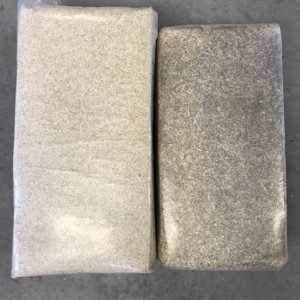
(left) Hemp bedding where the stalk has been properly separated for absorption. (right) Non-separated hemp identified by a “dirty” color.
Is hemp bedding safe if ingested by a horse?
Again, if the hemp stalk is not properly separated, you could have problems. It all comes down to the quality of bedding. I have heard stories about owners who have had problems with their horses ingesting hemp bedding, but in all cases it had to to with bedding where the entire stalk was harvested and not separated. To date, we have not had any issues with our customers, and I believe it is due to the quality of separation and quality of the hemp hurd.
What is the cost of hemp compared to common bedding?
The initial bed is not inexpensive, but the economics come into play later, as most stalls only require one bag per week thereafter because take-away is minimal. Bedding is one of the most expensive things we buy as horse owners/barn & farm owners. It is important to actually run numbers before you think this is too expensive…you would be surprised!
I ask people how much per month they are spending on shavings and take-away. Most people have to get it hauled off because they just don’t have an alternative. If you do the math, especially with horses not turning out, you are spending a lot. Hemp bedding cuts labor time to a quarter and cuts take-away costs by half. For hemp bedding, we recommend seven bags to bed a 12×12 stall, and then one bag per week. Our 44 lb. bags are $25 and equal to about two and a half bags of normal shavings. We also offer a 40 lb. bag for $24.
Are there any cons, or specific reasons one might not incorporate hemp bedding into a barn?
Training employees/stall muckers to use the bedding can be challenging. We try to show the people cleaning the stalls how much they will love it, because it results in far fewer walks to the muck heap!
Hemp bedding functions differently than other types of bedding. For easy maintenance tips, visit EnviroEquine’s stall set-up guide. With with special thanks to Angela Brackett of EnviroEquine.
